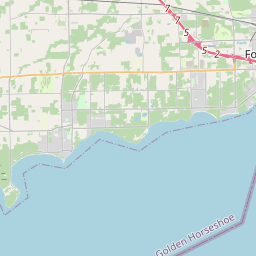Inscription
Erie Canalway National Heritage Corridor
When the Erie Canal was completed here in October 1825, Buffalo was transformed from a small lakefront hamlet to a thriving muscular metropolis. Buffalo was the port where grain, lumber, and other products from the interior of the American continent were transferred from lake schooners and steamers to canal boats. Manufactured goods traveled west by canal, along with waves of people moving into the interior. Because all of those products and people had to change from one mode of travel to the next here in Buffalo, the city became the hinge point between the Atlantic and the Great Lakes and the incubator for Cleveland, Toledo, Detroit, Chicago, and Duluth. By the mid-1800's Buffalo was called "the greatest inland port in the world." Commercial and Residential Neighborhoods. As Buffalo grew and thrived, the city's commercial and residential districts expanded inland on higher ground. Erie Canal. Commercial Slip and the section of the Erie Canal between Tonawanda and Buffalo were abandoned in the 1920's. Interstate 190 now runs on the old canal bed. In the 1800s over 6,800 cargo vessels were registered on New York's canal system. Some days it seemed like they were all here in Buffalo. Canal District. Buffalo's waterfront was a lively place. Grain elevators, flour mills, coal trestles, lumber yards, and commodity brokers served the cargo. Boarding houses and implement suppliers catered to migrants. Boat yards, ship chandlers, and sail lofts supplied the needs of lake and canal boats. Taverns and brothels served their crews. The galleried buildings along Central Wharf housed the Buffalo Board of Trade, grain brokers, wholesalers, insurance companies, and other businesses that profited from lake navigation, canal traffic, and the transfer of cargos between the two. Industry and Transportation. The transportation and industrial activities that funded much of Buffalo's prosperity crowded along the waterfront. A network of slips, side cuts, canals, and basins were cut to facilitate transfer of goods. Grain elevators were signal elements of the Buffalo skyline. They received Midwestern grain from lake freighters, stored it, and then dispersed it to canal boats and rail cars for distribution to New York City and the world beyond. Rail cars emptied their loads of Pennsylvania coal onto upper levels of trestles that lined Buffalo harbor. Gravity-fed chutes loaded canal boats that carried fuel to midwestern industries and homes.Details
| HM Number | HM1LFJ |
|---|---|
| Series | This marker is part of the Erie Canal series |
| Tags | |
| Placed By | U.S. Department of the Interior |
| Marker Condition | No reports yet |
| Date Added | Wednesday, July 1st, 2015 at 10:01pm PDT -07:00 |
Pictures
Locationbig map






| UTM (WGS84 Datum) | 17T E 673226 N 4749412 |
|---|---|
| Decimal Degrees | 42.87766667, -78.87898333 |
| Degrees and Decimal Minutes | N 42° 52.66', W 78° 52.739' |
| Degrees, Minutes and Seconds | 42° 52' 39.6" N, 78° 52' 44.34" W |
| Driving Directions | Google Maps |
| Area Code(s) | 716 |
| Closest Postal Address | At or near 1 Marine Dr, Buffalo NY 14202, US |
| Alternative Maps | Google Maps, MapQuest, Bing Maps, Yahoo Maps, MSR Maps, OpenCycleMap, MyTopo Maps, OpenStreetMap |
Is this marker missing? Are the coordinates wrong? Do you have additional information that you would like to share with us? If so, check in.
Nearby Markersshow on map
Maintenance Issues
- What historical period does the marker represent?
- What historical place does the marker represent?
- What type of marker is it?
- What class is the marker?
- What style is the marker?
- Does the marker have a number?
- What year was the marker erected?
- This marker needs at least one picture.
- Can this marker be seen from the road?
- Is the marker in the median?

Comments 0 comments